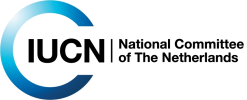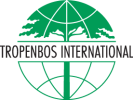The Ugandan Murchison landscape MoMo4C Project is calling for innovative green propositions to support the development of the nascent CLA Business Plans into full-blown Business Cases for the Sustainable Management of community forests as buffers to the Budongo Forest Reserve -while at the same time, enabling the CLA members to benefit from them.
The new report "Finance for integrated landscape management. De-risking smallholder farmer investments in integrated landscape management" is part of a series of case studies that provide insights into various mechanisms used to increase access to finance for smallholder farmers, SMEs and communities in their efforts to contribute to sustainable landscapes.
Uganda is home to one of the richest rainforests in Africa, but population growth, unsustainable land use and climate change put increasing pressure on nature and livelihoods. Conserving these can only be done through strong collaboration between local, national and international networks of local communities, civil society, government and businesses. IUCN NL strengthens processes to connect different levels of nature conservation by supporting communities and civil society groups in Uganda, together with our partner organisation ECOTRUST.
Conserving key ecosystems like forests, as well as culture and livelihoods is a huge challenge for which solutions can only be found through strong collaboration between local, national and international networks of local communities, civil society, government and businesses. We are strengthening processes to connect different levels of nature conservation by supporting communities and civil society groups in Uganda.
Uganda has been classed “high risk” under the risk assessment for humanitarian crises and disasters with impacts on displaced people and vulnerable groups (Irish Aid, 2018) . To improve climate resilience in the Murchison-Semliki landscape, ECOTRUST is strengthening conservation partnerships that focus on strengthening biodiversity corridors that connect remaining wildlife and forest reserves in the landscape.
The Murchison-Semliki Landscape extends from the Murchison Falls National Park at the northern end of Lake Albert to the Toro-Semliki Wildlife Reserve at the southern end. It is rich in natural resources such as lakes, rivers, national parks, game reserves, tropical high forests, savanna grasslands, woodlands and wetlands. It hosts 39% of Africa’s mammal species, 52% of its bid species and 19% of its amphibian species along with 14% of the plant and reptile species. It is also home to 3.7 million people.
Rapid Deforestation
The once continuous forests is now reduced and disaggregated into large and small forest patches. Population growth, agricultural expansion, migration, poverty, infrastructure development and fuelwood collection all contribute to rapid deforestation. Recent oil exploitation adds to the mix.
Affected by Extreme Weather Events
Uganda is already experiencing impacts of climate change and is ranked as “high risk” under the risk assessment for humanitarian crises and disasters with impacts on displaced people and vulnerable groups, and increasing inequality and social-economic vulnerability. The Murchison-Semliki landscape is increasingly affected by extreme weather events.
Deforestation and biodiversity loss further aggravate the vulnerability of the landscape and its inhabitants to climate change impacts such as drought and flooding. Due to high levels of poverty and inequality, the smallholder farmers in the landscape are the most affected.
MOMO4C Action In The Murchison-Semliki Landscape
To improve climate resilience in the landscape, the implementing partner ECOTRUST is convening a conservation partnership that focuses on strengthening wildlife corridors that connect wildlife and forest reserves that are home to important remaining populations of chimpanzees and other wildlife in the landscape. The multi-stakeholder partnership develops conservation arrangements with smallholder farmers to protect and restore forests and other natural ecosystems across and around the corridors.
A Landscape Action Plan has been developed in which all stakeholders have a say and that outlines how key climate and other environmental challenges will be tackled in the years to come. This outline forms the basis for a Landscape Investment Plan that has been developed and designed to attract investments with a particular focus on women and youth.
ECOTRUST and its local partners seek collaboration with relevant government agencies including the national REDD+ agency to make sure that interventions are linked to national and local policies.
Map: The main protected areas and natural habitats in the Murchison-Semliki landscape © A.J. Plumptre


